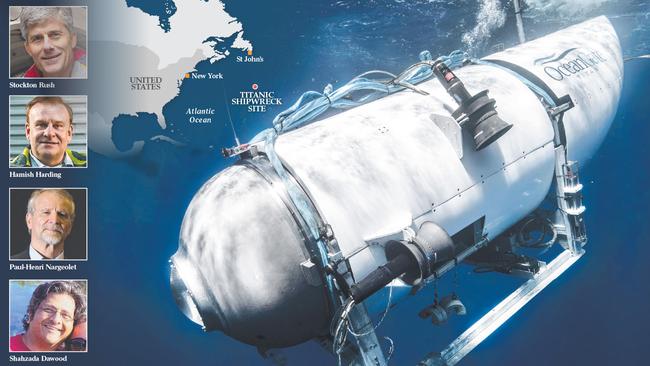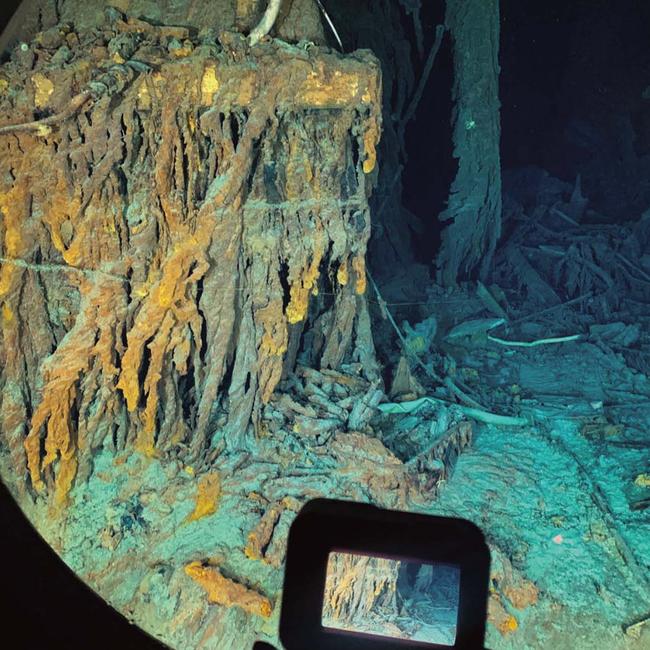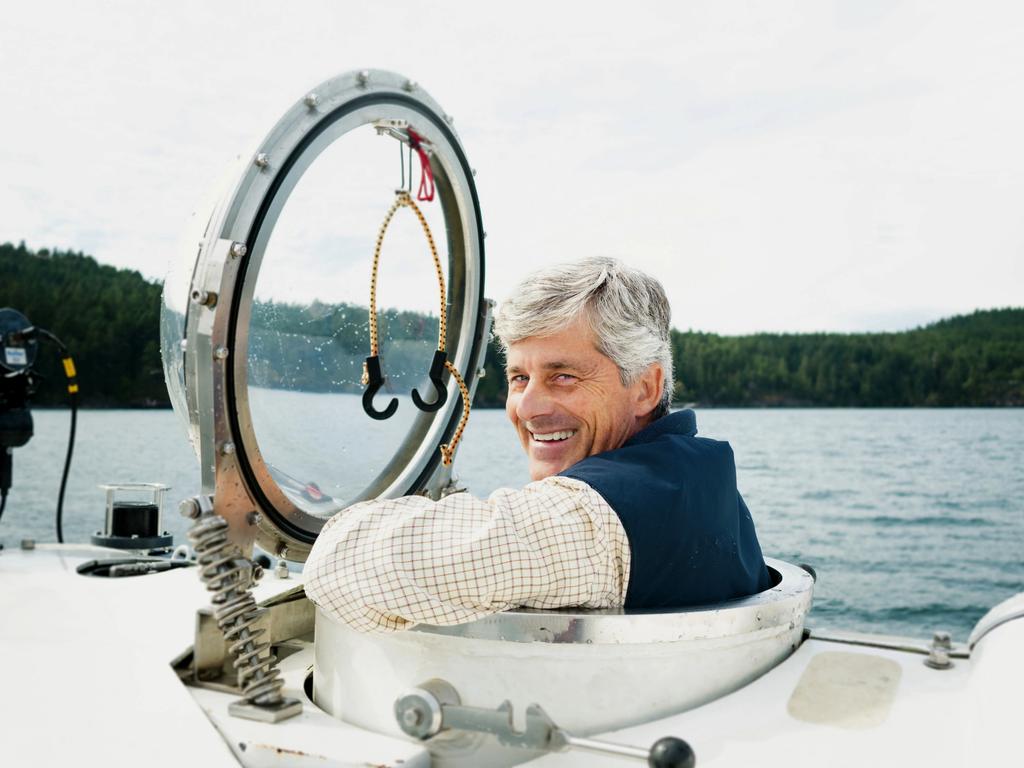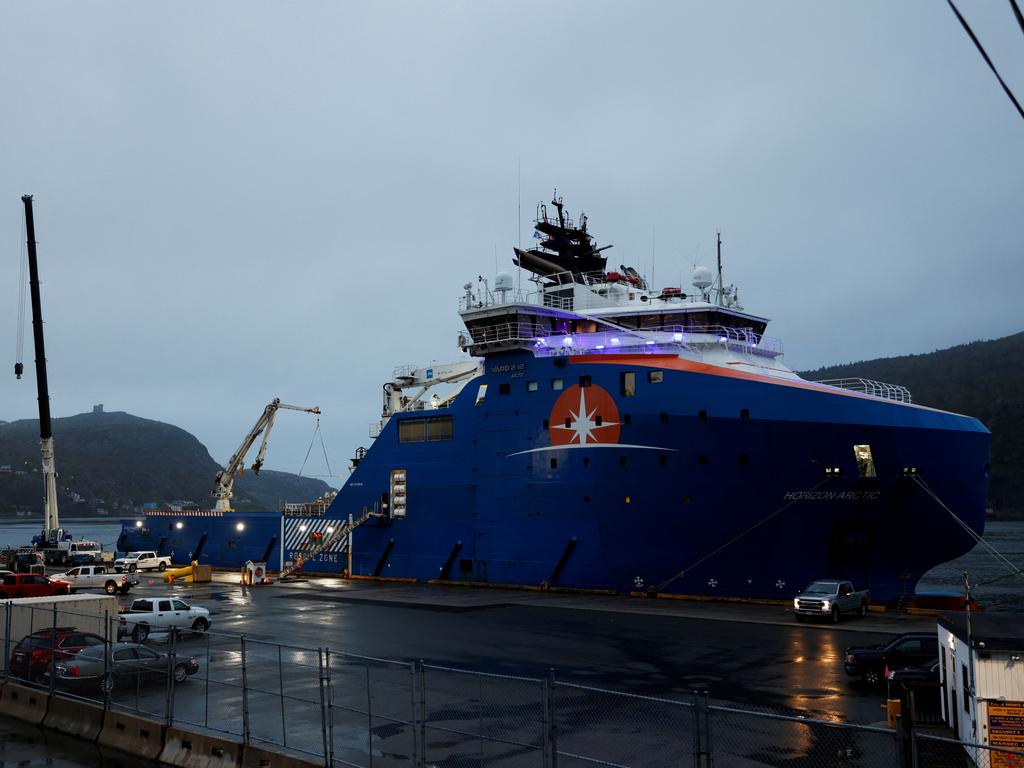Titanic submersible: What we know and what could have happened
The search uncovered five major pieces of debris, including a nose cone and the front-end bell of the pressure hull. Now the question must be asked why did Titan meet a watery grave?

The five people inside a submersible that went missing Sunday are dead, according to the US Coast Guard and the company that operated the vessel.
The craft, called Titan and operated by OceanGate Expeditions, dived in an area about 900 miles off Massachusetts’ Cape Cod on an expedition to visit the wreck of the Titanic. Titan lost contact with a research vessel on the surface about one hour and 45 minutes into the dive, kicking off a desperate, dayslong search for the submersible and its passengers.
The Coast Guard said Thursday it found debris consistent with “the catastrophic loss” of the submersible’s pressure chamber approximately 1,600 feet from the bow of the Titanic.
What’s the latest update on the search?
The search uncovered five major pieces of debris that told investigators they had found the Titan’s remains, including a nose cone and the front-end bell of the pressure hull, officials said at a news briefing Thursday.
The debris was found on the ocean floor in a smooth area without any debris from the Titanic shipwreck 500m away, said Carl Hartsfield of the Woods Hole Oceanographic Institution, which was helping with the search.
“The debris is consistent with the catastrophic loss of the pressure chamber,” said Coast Guard Rear Adm. John Mauger, who has been leading the search.
Asked about the prospect of finding the passengers’ bodies, Mauger said the operation took place in “an incredibly unforgiving environment.”
“We’ll continue to work and to search the area but I don’t have an answer for prospects,” he said.
A top secret military acoustic detection system designed to spot enemy submarines first heard what the U.S. Navy suspected was the Titan submersible implosion hours after the vehicle began its mission, officials involved in the search said.
The Navy began listening for the Titan almost as soon as the sub lost communications, according to a U.S. defense official. Shortly after the submersible’s disappearance Sunday, the U.S. system detected what it suspected was the sound of an implosion near the debris site discovered Thursday and reported its findings to the commander on site, U.S. defense officials said. “The U.S. Navy conducted an analysis of acoustic data and detected an anomaly consistent with an implosion or explosion in the general vicinity of where the Titan submersible was operating when communications were lost,” a senior U.S. Navy official told The Wall Street Journal in a statement. “While not definitive, this information was immediately shared with the Incident Commander to assist with the ongoing search and rescue mission.” The Navy asked that the specific system used not be named, citing national security concerns.
Teams and equipment from around the world converged in a remote part of the North Atlantic to help with the search. They combed an area at least twice the size of Connecticut for the 22-foot-long Titan.
Rescuers had focused on an area where Canadian aircraft detected banging noises underwater, officials said Wednesday. Officials said Thursday there didn’t appear to be any connection between the noises and where debris from the vessel was found.
Who were the passengers on the Titan submersible?
Pakistani businessman Shahzada Dawood was on the craft with his 19-year-old son, Suleman, according to a statement from the family’s company. The Dawoods, one of Pakistan’s richest families, are owners of a conglomerate called Engro that produces everything from electricity to fertilizer to milk.
British aviator and explorer Hamish Harding was also on board, according to his company Action Aviation, which specializes in services including aircraft brokerage, management and financing. Harding had undertaken a series of record-breaking challenges that led him to the depths of the ocean and around the world. He also went to space on a Blue Origin flight last year.
Another passenger, Paul-Henry Nargeolet, was considered a leading authority on the Titanic wreck, according to the website of Experiential Media Group. The Georgia-based company lists Nargeolet as its director of underwater research.
Nargeolet spent 22 years in the French Navy, rising to the rank of commander. He completed more than three dozen dives to the site of the wreckage.
OceanGate’s founder and chief executive, Stockton Rush, was also aboard the submersible, according to a spokesman for the company.
What is OceanGate Expeditions?
Rush founded OceanGate in 2009, saying in a speech last year that he wanted to expand deep-sea exploration.
The Washington-based firm owns three submersibles, including the Titan, that have completed more than 200 deep-sea dives, according to the company’s website. OceanGate completed two trips to the Titanic wreck in 2021 and 2022.
This year’s expedition was slated to last 10 days, with eight days at sea. Stefan Williams, a professor of marine robotics at the University of Sydney, said it takes about two hours to travel from the surface of the ocean to the wreckage in the submersible.
OceanGate, a privately owned company, lists six board members, including Rush, on its website. The other members include an astronaut and a financial executive.
Tourists can pay $250,000 to join an expedition to see the Titanic.
What kind of craft was the Titan?
The Titan was about 22 feet long and equipped with a sonar system, four LED lights and a device that should have allowed it to emit acoustic signals, according to OceanGate. The submersible launched from and landed on a submerged platform and was capable of reaching depths of around 13,000 feet.
A video posted by the company showed that it had a low roof, requiring passengers to be seated, and a small window to look out from. Each member was trained as a mission specialist for the eight-day trip. The submersible had a small toilet in the front that could be hidden by a curtain.Rush said in a 2022 segment with CBS News that the vessel was operated by a videogame controller. Such controllers are commonly used in applications beyond videogames, said Will McKeon-White, an analyst at technology research firm Forrester.
The hull of the Titan was made of a combination of titanium and composite material and was sensitive to defect, said Eric Fusil, director of the shipbuilding hub at the University of Adelaide in Australia. “For these depths we are looking at perfect spheres…to withstand such pressure,” he said.
Any defect could cause a pressure hull implosion, which would take place in milliseconds and would be large enough to be picked up by seismometers that detect earthquakes, he said.
What is the difference between a submersible and a submarine?
A submersible is usually a small boat or craft designed to be sent underwater for research and exploration. They require a mother ship to launch them, while traditional submarines are equipped to leave port and return on their own. A submersible is usually smaller and has less power, so it requires a larger ship to launch and recover it.
The most common submersibles are robots that are deployed from a mother ship to the sea, where they record and collect information and samples for scientific research, according to the National Oceanic and Atmospheric Administration.
NOAA operates three types of submersibles: human-occupied vehicles, remotely operated vehicles and autonomous underwater vehicles. Human-occupied vehicles are the ones most closely resembling the Titan. Such craft, first built in the 1960s, contain compact pressure hulls with a window that allows those on board to see out, according to NOAA.
What happened to the Titanic?
The Titanic shipwreck has captivated public attention for more than a century. Operated by the White Star Line shipping company, the luxury ocean liner departed Southampton, England, for its maiden voyage across the Atlantic to New York in 1912. The ship sank the night of April 14-15 in the North Atlantic after hitting an iceberg. Of the more than 2,200 passengers and crew aboard, only about 700 people survived.

Where is the Titanic wreckage?
After years of intense searching, the wreck of the Titanic was discovered in 1985 by researchers from the Massachusetts-based Woods Hole Oceanographic Institution.
The wreck of the Titanic is below 12,500 feet of water in the Atlantic, about 350 miles southeast of Newfoundland, Canada, according to the Smithsonian.
The Wall Street Journal





To join the conversation, please log in. Don't have an account? Register
Join the conversation, you are commenting as Logout